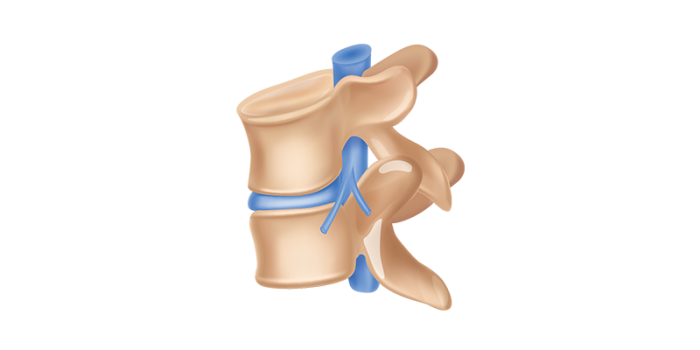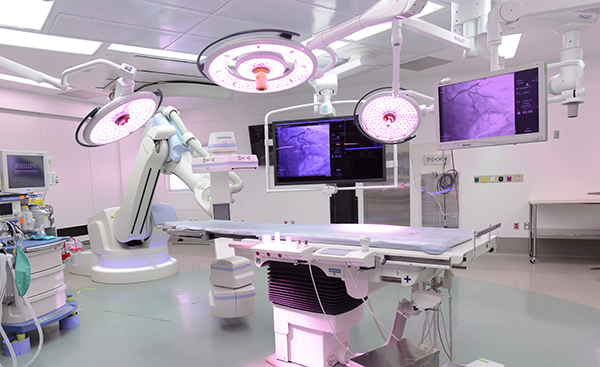What Causes Brain and Spinal Cord Cancers?
Brain and spinal cord cancers develop in the adult central nervous system. They appear as tumors where abnormal cells have formed in the tissues of the brain, the spinal cord, or both. Tumors that start in the brain or spinal cord are called primary tumors. Tumors that start in another part of the body and then spread to the brain or spinal cord are called metastatic or secondary tumors.
A cancer diagnosis can feel overwhelming. That’s why we’re here. You can lean on our team of board-certified doctors and oncologists for cancer care delivered with compassion and decades of combined experience. Rest assured, they’re on top of every step of your care.

Brain Cancer
There are more than 120 different types of brain tumors. Some are malignant and grow quickly, others may be benign and grow more slowly. Your cancer care team has the experience needed to fight with you against this form of cancer.

Spinal Cancer
This is cancer that begins to grow in the spinal cord or its surrounding structures. Most spinal tumors are metastatic, which means they have spread to the spine from another part of the body.
Types of Brain Cancers
- Astrocytomas. These are the most common central nervous system tumors that develop anywhere in the brain or spinal cord. Within this group of tumors, there are fast-growing, aggressive cancers called glioblastoma multiforme and non-cancerous, slow-growing tumors called meningioma.
- Craniopharyngiomas. These are mostly benign tumors. But they sometimes put pressure on a part of the brain that controls vital functions such as hunger and thirst.
- Ependymomas. They usually develop in the lining of the spaces in the brain and around the spinal cord. They are also a common spinal cord tumor.
- Germ cell tumors. These grow from developing sex (egg or sperm) cells. The most common type in the brain is the germinoma. These can begin in the ovaries, testicles, chest, and abdomen and move to the brain.
- Medulloblastomas. These fast-growing brain tumors grow from the neurons of the cerebellum, which is the lower back of the brain that controls balance and movement.
- Oligodendrogliomas. These develop in the cells that produce the fatty covering that protects nerves in the brain and spinal cord, which is called myelin. These are very rare, slow-growing tumors.
- Pineal region tumors. The pineal gland is a small organ located in the center of the brain. The tumors grow around this gland and can be fast-growing or slow-growing. It takes a high level of surgical expertise to remove these tumors because they are very hard to reach.
- Pituitary cancers. A very rare form of cancer, these cancers and benign tumors typically look alike under a microscope and are often not diagnosed until they have spread to other parts of the body.
- Primary CNS lymphomas. These tumors develop in lymph tissue of the brain or spinal cord.
Diagnosing Brain and Spinal Cord Cancers
We use advanced tools and methods to diagnose brain and spinal cord cancer.
- Angiogram. This procedure looks at blood vessels and the flow of blood.
- Gene testing. The laboratory test takes a sample of blood or tissue and analyzes it for changes in a chromosome that has been linked with certain types of tumors.
- Scans. These tests include positron emission tomography (PET), which finds malignant tumor cells in the body. The SPECT scan uses a special camera linked to a computer to make a 3D picture of the brain.
- Tumor marker test. A sample of blood, urine or tissue is checked to measure the amounts of certain substances made by organs, tissues, or tumor cells in the body.
- Visual field exam. This test is used because some tumors cause problems with vision.

Treating Brain and Spinal Cord Cancers
Brain and spinal cord cancer care takes a team. You’ll have specialists working together to create a plan that combines different types of treatment. You can feel confident in our complete understanding of what works best for your condition and the experience to back it up. These are the treatments we will tailor to your brain and spinal cord cancer diagnosis (in alphabetical order):
- Chemotherapy (chemo). Chemo treatments use specialized medicines to kill cancer cells. Our locations provide chemotherapy infusions in comfortable, private bays that are supported by highly trained infusion nurses.
- Radiation therapy. This treatment can be used by itself, with surgery, chemotherapy, or both. Your team will guide you to our sophisticated forms of radiation treatment. We use image guided radiation therapy (IGRT), intensity modulated radiation therapy (IMRT), and stereotactic radiosurgery (SRS).
- Stereotactic radiosurgery. This therapy uses image-guidance to focus radiation on a portion of the brain or spine. Our robotic radiosurgery system is a painless, noninvasive, outpatient cancer treatment with minimal to no side effects. Your specialist can zero in on the target tumor and irradiate it without harming the surrounding healthy tissue.
- Surgery. This is usually the first treatment for brain and spinal cord cancer. It may include intraoperative brain mapping, which allows for a more refined surgical removal of the tumor and improves the quality of life. Image-guided stereotactic surgery is another surgery method. The system reduces the size of the incision and any injury to nearby brain tissue. It also lets your neurosurgeon visualize your brain in 3D before and during surgery.
- Watchful waiting. Based on the type of cancer you have, your care team may suggest "watchful waiting" for blood cancers that won’t require cancer treatment for a long time. Whenever we can safely delay treatment, it will help you avoid the side effects of chemotherapy or radiation therapy.


